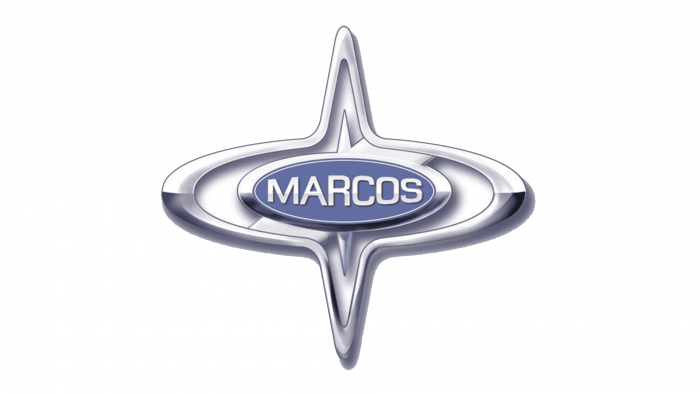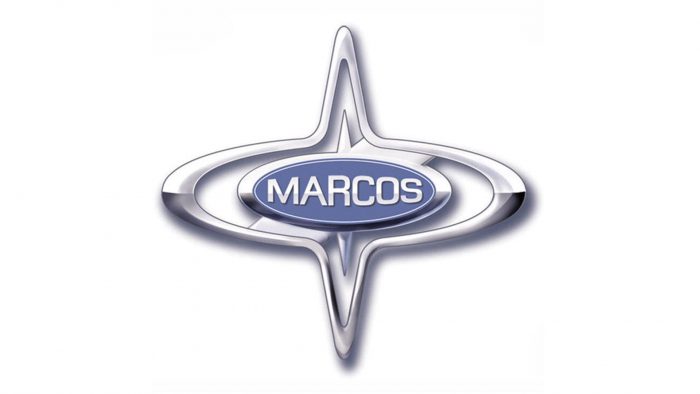Marcos is the name of a former British automaking brand, which was established by Jem Marsh and Frank Costin in 1959. The company was known for the production of sports cars and has released several truly outstanding models throughout its history until all the operations have been ceased in 2007.
Meaning and history
The name of the company, Marcos, is a derivative from the surnames of its founders — MArsh and COStin. And this name is the main hero on the Marcos badge, which hasn’t had many redesigns throughout the brand’s history. The biggest changes were made to the background of the badge — it could be seen in silver or white and red, while all other details stayed untouched for years.
The Marcos badge featured a horizontally stretched oval with two thin triangles coming out of it to the top and bottom. The shape of the emblem resembled a four-pointed star and its silver outline only elevated this feeling. In the middle of the oval, there was a smaller one, repeating its shape. It has a bright blue background and glossy silver lettering on it.
The Marcos inscription featured all-capitals, which all were written in different sizes, repeating the contour of the ellipsoid banner.
The second version of the company’s badge has a glossy white background of the main part; and a thick red diagonal fragment crossing it, behind the bright blue banner with a nameplate.
Font and color
The modern and sleek Marcos lettering was written in all capitals of a custom square sans-serif typeface with the angles of the letters rounded and the Engel straight and strong. The font of the corporate logotype was pretty close to Pawl Square Bold, but with some lines softened and slightly changed.
The primary color palette of the Marcos visual identity was composed of just blue and silver, a fresh and airy combination, looking modern and stylish, and evoking a sense of trustworthiness and loyalty of the company to its customers, along with their willingness to produce the cars of the highest quality, using all the available innovations.
As for the secondary palette, it gained two additional colors — white and red: they added elegance and a “royal touch” to the badge, reflecting the passion and energy of the company, and its ability to change and progress.








